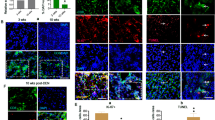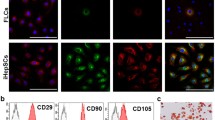Abstract
Alcoholic liver disease is a huge medical and social problem that leads to liver fibrosis, cirrhosis, and hepatocellular carcinoma. Unfortunately, the last stages of the disease do not have efficient treatment, except liver transplantation, and require development of new therapeutical approaches. Transplantation of stem cells might be the most promising approach. In our research, we studied transplantation of autologous hematopoietic stem cells (HSC) into the celiac trunk of patients with alcoholic liver cirrhosis. In this article, we pay particular attention to proliferation and apoptosis—two fundamental processes, which determine the fate of regeneration. Liver biopsy specimens before treatment, 3 and 12 months after transplantation of HSC, were stained immunohistochemically with antibodies against PCNA and Bcl-2. The results showed that treatment was safe and effective, hepatocytes increased proliferation, and inflammatory cells decreased antiapoptotic activity, signifying improvement in liver regeneration. However, effect of treatment after 12 months decreases and requires repeated HSC transplantation.



Similar content being viewed by others
References
Fujii, H., Hirose, T., Oe, S., et al. (2002). Contribution of bone marrow cells to liver regeneration after partial hepatectomy in mice. J Hepatol, 36(5), 653–659.
Masson, S., Harrison, D. J., Plevvris, J. N., Newsome, P. H. (2004). Potential of hematopoietic stem cell therapy in hepatology: a critical review. Stem cells, 22(6), 897–907.
Kakinuma, S., Tanaka, Y., Chinzei, R., et al. (2003). Human umbilical cord blood as a source of transplantable hepatic progenitor cells. Stem Cells, 21(2), 217–227.
Tang, X. P., Yang, X., Tan, H., Ding, Y. L., Zhang, M., Wang, W. L. (2003). Clinical and experimental study on therapeutic effect of umbilical cord blood transplantation on severe viral hepatitis. World J. Gastroenterol, 9(9), 1999–2003.
Am Esch, J. S., II, Knoefel, W. T., Klein, M., et al. (2005). Portal application of autologous CD133+ bone marrow cells to the liver: a novel concept to support hepatic regeneration. Stem Cells, 23(4), 463–470.
Am Esch, J. S., II, Schmelzle, M., Fürst, G., et al. (2012). Infusion of CD133+ bone marrow-derived stem cells after selective portal vein embolization enhances functional hepatic reserves after extended right hepatectomy: a retrospective single-center study. Ann. Surg, 255(1), 79–85.
Saadeh, S., Cammel, G., Carey, W. D., Younossi, Z., Barnes, D., Easley, K. (2001). The role of liver biopsy in chronic hepatitis C. Hepatology, 33(1), 196–200.
Leonardi, E., Girlando, S., Serio, G., Mauri, F. A., Perrone, G., Scampini, S., et al. (1992). PCNA and Ki67 expression in breast carcinoma: correlations with clinical and biological variables. J Clin. Pathol, 45(5), 416–419.
Vaux, D. L., Cory, S., Adams, J. M. (1988). Bcl-2 gene promotes haemopoietic cell survival and cooperates with c-myc to immortalize pre-B cells. Nature, 335, 440–442.
Kim, J. K., Park, Y. N., Kim, J. S., et al. (2010). Autologous bone marrow infusion activates the progenitor cell compartment in patients with advanced liver cirrhosis. Cell Transplant, 19(10), 1237–1246.
Terai, S., Sakaida, I., Yamamoto, N., et al. (2003). An in vivo model for monitoring transdifferentiation of bone marrow cells into functional hepatocytes. J. Biochem, 134(4), 551–558.
Acknowledgments
This work was performed as a part of the Program “Development of Cell Medicine in Republic of Tatarstan” on the base of the Republican Clinical Hospital and according to the Russian Government Program of Competitive Growth of Kazan Federal University and subsidy allocated to Kazan Federal University for the state assignment in the sphere of scientific activities.
Author information
Authors and Affiliations
Corresponding author
Ethics declarations
This single center uncontrolled open-label clinical trial was approved by the Republican Ethical Committee of Ministry of Health of the Republic of Tatarstan. The study was performed after obtaining written informed consent form from all patients in accordance with ethical norms of Helsinki declaration (2000).
Additional information
Guzel Burganova, Sayar Abdulkhakov, Ilnaz Gazizov, Anisa Gumerova, Marina Titova, Alfiya Odintcova, and Andrey Kiassov contributed equally to this work.
Rights and permissions
About this article
Cite this article
Burganova, G., Abdulkhakov, S., Gazizov, I. et al. Liver Cells Proliferation and Apoptosis in Patients with Alcoholic Liver Disease After Autologous Hematopoietic Stem Cell Transplantation. BioNanoSci. 7, 302–305 (2017). https://doi.org/10.1007/s12668-016-0354-2
Published:
Issue Date:
DOI: https://doi.org/10.1007/s12668-016-0354-2




